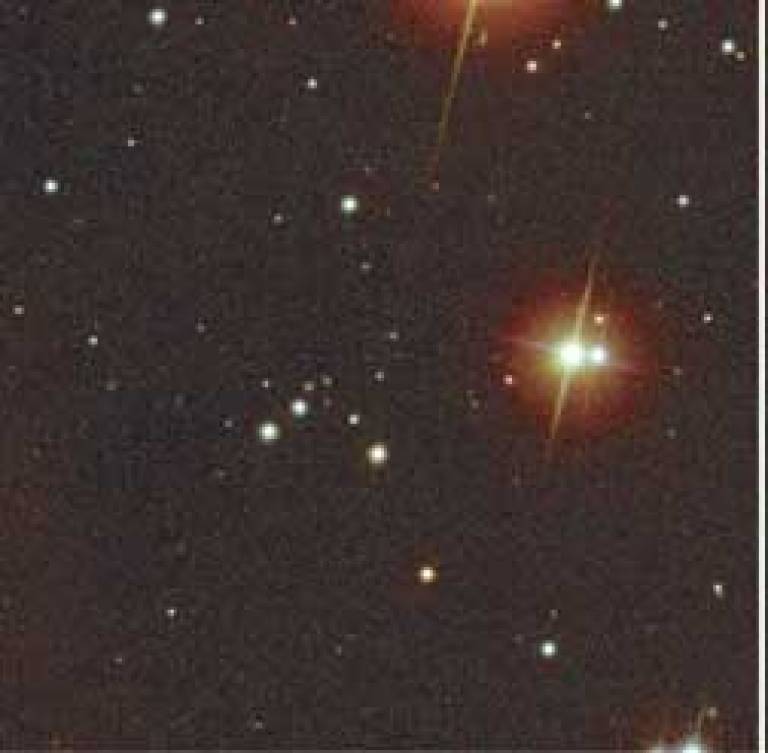Supernova explosion witnessed
6 September 2006
Dr Alex Blustin and Dr Mat Page (UCL Mullard Space Science Laboratory) witnessed for the first time ever the death of a star as it went supernova - a devastating explosion that briefly outshone an entire galaxy.

The research team of international space scientists utilised NASA's Swift satellite and a combination of orbiting and ground-based observatories to record the star at the dramatic end of its life. In doing so, they also witnessed for the first time how a gamma ray burst (GRB) can emerge from a supernova explosion.
The dying star was in a star-forming galaxy 440 million light years away, in the constellation Aries. The event began on 18 February 2006, when astronomers noticed an unusual GRB, about 25 times closer to Earth and 100 times longer than a typical GRB. Because the burst was so long, Swift was able to record the majority of the event with all three of its instruments - the Burst Alert Telescope, which detected the burst and relayed the location to ground observatories within 20 seconds, the X-ray telescope (XRT) and Ultraviolet/Optical Telescope (UVOT), which provide high-resolution imagery and spectra across a broad range of wavelengths.
Dr Blustin said: "The fact that Swift can re-point very fast, slewing round to bring the XRT and UVOT to bear on the burst allowed us to get onto it very quickly indeed, enabling us to observe the critically important early behaviour of the event"
The exceptionally long burst, in the form of a jet of
high-energy X-rays, pierced through the star from its core, signalling
that a supernova was imminent moments before the explosion. The results
suggest that a broad jet expanded into the surroundings, accompanied by
a slower moving and incredibly hot - two million degree - bubble of gas
produced from the explosion's shock-wave. The unique capabilities of
the UVOT, designed and built at the UCL Mullard Space Science
Laboratory, allowed Dr Blustin and Dr Page to track the evolution of
the exploding star while it was taking place.
"We measured the expansion rate of the super-heated surface to be about thirty thousand kilometres per second, as the star flew apart. This is the first time anyone has actually observed the death of a star as it was taking place," said Dr Page.
Two days later, the classical supernova - a glowing cloud of gas powered by the decay of radioactive debris from the dead star - was beginning to outshine the fading shock wave.
Professor Keith Mason, UK lead investigator for the UVOT telescope on Swift, CEO of the Particle Physics and Astronomy Research Council and former director of the UCL Mullard Space Science Laboratory, commented: "Usually these events are not detected until after the exploding star has brightened substantially in the optical wavelength, many days after the initial explosion, but on this occasion we were able to study the remarkable event in all its glory from the very beginning." The results are published in the 31 August issue of 'Nature'.
To find out more, use the links at the bottom of this article
Image 1: Before the strange explosion that appeared on 18 February 2006 (Credit: SDSS)
Image 2: The aftermath of the explosion (Credit: NASA/Swift/UVOT)
 Close
Close

